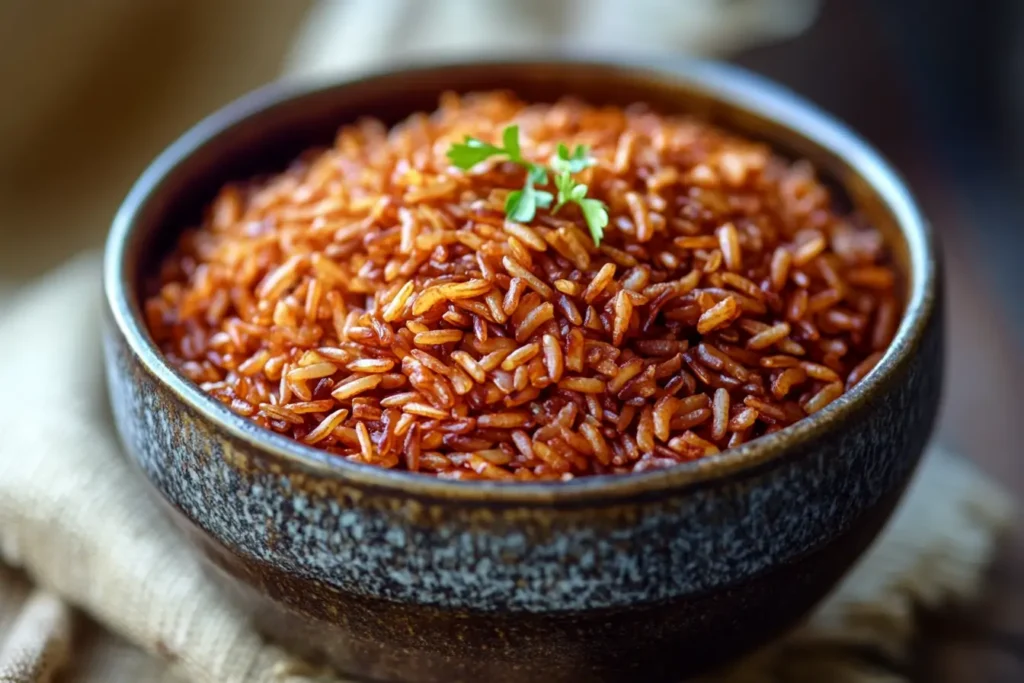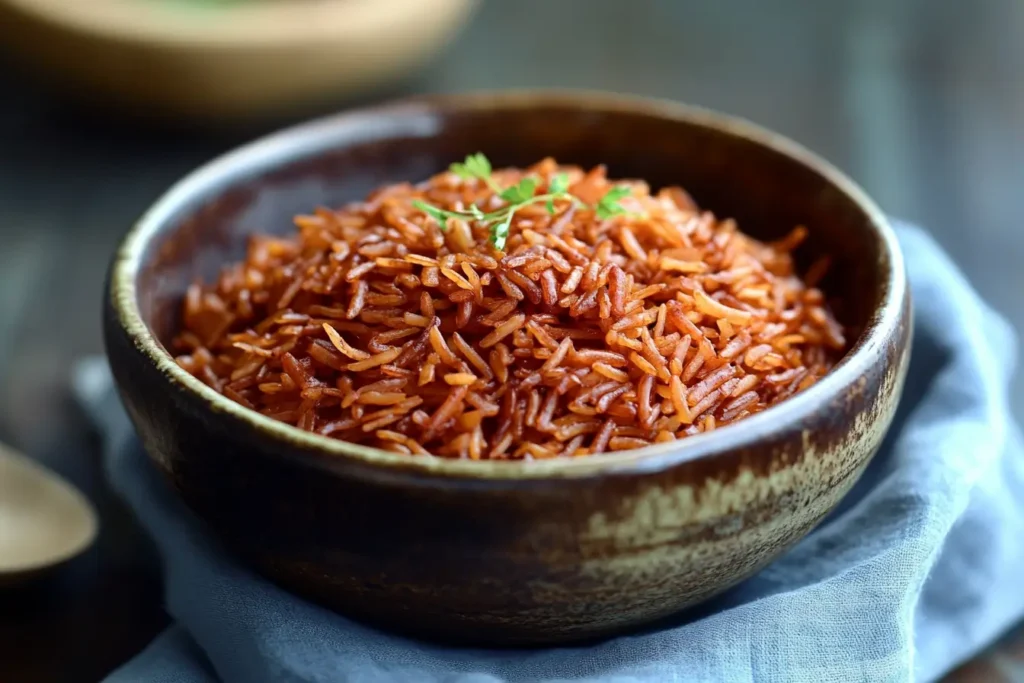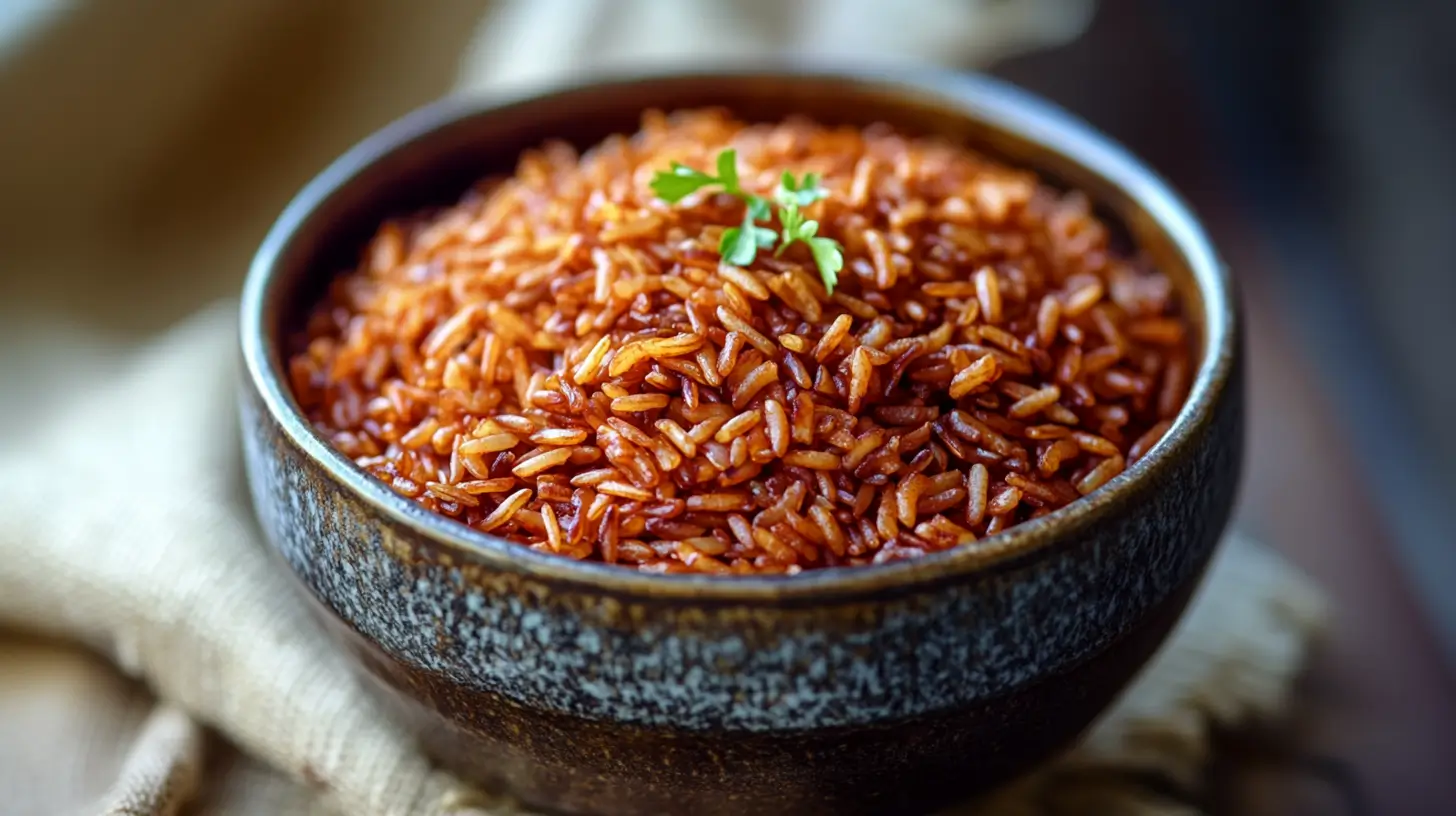Imagine a warm, comforting meal that not only satisfies your hunger but also nourishes your body. A meal that’s packed with nutrients, antioxidants, and fiber—something that can keep you energized and feeling good. Enter red rice, a flavorful and healthy grain that is often overlooked in favor of its more common white rice cousin. But once you try it, you’ll see why it deserves a place in your kitchen. Whether you’re seeking a nutritious alternative to regular rice or just looking for a new ingredient to spice up your meals, a red rice recipe might just be what you need.
Red rice has been enjoyed for centuries, particularly in parts of Asia. Its unique reddish-brown color comes from the outer bran layer, which retains more of the natural nutrients. What’s more, red rice is incredibly versatile—it pairs well with a variety of dishes and can be used in both savory and sweet recipes. This article will walk you through the many benefits of red rice, how to cook it, and some exciting recipes you can try at home. So, if you’re ready to elevate your meals with a healthy, delicious grain, keep reading!
What is Red Rice?
Red rice is a whole grain rice that retains its outer husk or bran layer. Unlike white rice, which has been polished to remove the outer layers, red rice contains a wealth of nutrients that are often lost during processing. The natural red color of the rice comes from anthocyanins, a type of antioxidant that gives red, purple, and blue fruits and vegetables their color.
Origin and Varieties of Red Rice
Red rice is commonly found in regions of Asia, particularly in countries like India, Bhutan, and Thailand. There are various types of red rice, each with its own distinct flavor and texture. For example:
- Himalayan Red Rice: Known for its fragrant aroma and slightly nutty taste, it’s often used in Indian and Nepali cuisine.
- Bhutanese Red Rice: This variety is soft and slightly sticky when cooked, making it perfect for pairing with curries and stews.
- Thai Red Rice: Often used in Thai cooking, this rice is aromatic with a subtle sweetness.
Nutritional Benefits of Red Rice
You might be wondering: Why should you incorporate red rice into your diet? Well, red rice offers several health benefits that make it a worthy addition to your meals:
- High in Fiber – Red rice is an excellent source of dietary fiber, which can help regulate digestion, maintain healthy cholesterol levels, and keep you feeling fuller for longer.
- Packed with Antioxidants – The anthocyanins found in red rice are powerful antioxidants that support heart health, reduce inflammation, and protect the body from oxidative stress.
- Rich in Minerals – Red rice is a great source of essential minerals like iron, magnesium, and phosphorus, all of which contribute to overall health.

Why You Should Include Red Rice in Your Diet
Red rice isn’t just a delicious grain; it’s also a nutritional powerhouse. Here’s why you should consider making it a regular part of your diet:
Health Benefits of Red Rice
- Low Glycemic Index: Red rice has a lower glycemic index than white rice, making it a better choice for people with diabetes or those looking to manage their blood sugar levels.
- Weight Management: Thanks to its high fiber content, red rice helps with weight management by keeping you satisfied and reducing the urge to snack between meals.
- Rich in Antioxidants: Red rice’s antioxidants may help reduce the risk of chronic diseases, such as heart disease, cancer, and neurodegenerative conditions.
Red Rice vs White Rice
When comparing red rice to white rice, the benefits of red rice are clear:
- Nutrient Density: Red rice retains more nutrients than white rice due to its unrefined bran layer.
- Lower Glycemic Impact: Red rice has a lower glycemic index, making it a better option for regulating blood sugar levels.
- More Flavor and Texture: Red rice has a firmer texture and a nuttier, richer flavor compared to the milder taste of white rice.
In short, red rice is a healthier, more flavorful choice that can offer a range of benefits for your body.

How to Cook Red Rice – A Simple and Delicious Recipe
Now that you know all about the benefits of red rice, it’s time to learn how to cook it. Cooking red rice is straightforward, but it does require a bit more time than white rice due to its unrefined nature.
Basic Red Rice Recipe
Here’s a simple method to prepare red rice:
Ingredients:
| Ingredient | Quantity | Notes |
|---|---|---|
| Red rice | 1 cup | Rinse thoroughly before cooking |
| Water | 2 cups | You can substitute with vegetable broth for extra flavor |
| Olive oil | 1 tbsp | Optional, for added richness |
| Salt | 1 tsp | Adjust to taste |
| Aromatics (garlic, onion, etc.) | 2-3 cloves | Optional for flavor enhancement |
Instructions:
- Rinse the Rice: Begin by rinsing the red rice under cold water to remove excess starch.
- Boil the Water: In a medium-sized pot, bring 2 cups of water (or vegetable broth) to a boil.
- Add the Rice: Add the rinsed rice to the boiling water along with a pinch of salt and any aromatics (such as garlic or onions) if desired.
- Simmer: Lower the heat, cover the pot, and let the rice simmer for 35-40 minutes, or until it becomes tender and the water is absorbed.
- Fluff and Serve: Once the rice is cooked, fluff it with a fork to separate the grains. Serve it alongside your favorite dishes.
This basic red rice recipe is a perfect side dish or base for other meals. You can modify it by adding your choice of vegetables, proteins, or seasonings.
Creative Red Rice Recipes to Try
Red rice isn’t just for serving as a side dish. Here are a few creative ideas to turn this versatile grain into a main event.
Red Rice Stir-Fry
A red rice stir-fry is an easy and quick meal that’s full of flavor. Here’s how to make it:
Ingredients:
- Cooked red rice (2 cups)
- Assorted vegetables (carrots, peas, bell peppers, etc.)
- Soy sauce (2 tbsp)
- Garlic (2 cloves, minced)
- Protein of your choice (chicken, tofu, shrimp, etc.)
Instructions:
- In a large pan, heat some oil and sauté garlic until fragrant.
- Add the vegetables and stir-fry until tender.
- Stir in the cooked red rice and soy sauce, mixing well to coat the rice with the sauce.
- Add your protein and cook for an additional 5 minutes. Serve hot.
Red Rice Pudding
This sweet dish makes for a unique dessert that’s creamy and satisfying.
Ingredients:
- Cooked red rice (1 cup)
- Coconut milk (2 cups)
- Sugar (1/4 cup)
- Spices (cinnamon, cardamom, etc.)
Instructions:
- Combine the cooked red rice and coconut milk in a saucepan.
- Bring it to a simmer and cook until it thickens, about 15 minutes.
- Stir in sugar and spices. Serve chilled or warm.
Red Rice Salad
A refreshing, nutritious salad perfect for warm weather.
Ingredients:
- Cooked red rice (2 cups)
- Mixed greens (1-2 cups)
- Cherry tomatoes (halved)
- Cucumber (sliced)
- Vinaigrette dressing (optional)
Instructions:
- In a large bowl, combine the cooked red rice with the vegetables.
- Toss the mixture with a light vinaigrette dressing.
- Chill for 30 minutes and serve.
Storing and Preserving Red Rice
To make sure your red rice stays fresh, store it properly:
- Uncooked Red Rice: Keep it in an airtight container in a cool, dry place. It will last for up to a year.
- Cooked Red Rice: Refrigerate cooked red rice in an airtight container for up to 4 days. You can also freeze it for longer storage.

Frequently Asked Questions (FAQs)
How is red rice made?
Red rice is made by harvesting rice that retains its outer bran layer, which gives it its characteristic reddish-brown color. After the rice is harvested, it’s typically cleaned and then cooked, either by boiling or steaming. The process of milling is minimal, leaving the rice in its whole-grain form, preserving its nutrients and fiber.
Is red rice really healthier?
Yes, red rice is considered healthier than white rice due to its higher nutritional value. It contains more fiber, antioxidants, and essential minerals like magnesium and iron. The bran layer, which remains intact in red rice, provides health benefits such as improving digestion, supporting heart health, and stabilizing blood sugar levels.
What gives red rice its color?
The reddish color of red rice comes from anthocyanins, a type of antioxidant found in the bran layer. These natural compounds are responsible for the red and purple hues in various fruits, vegetables, and grains, and they offer a range of health benefits, including anti-inflammatory and heart-protective properties.
What is red rice in South Carolina?
In South Carolina, red rice refers to a specific variety of rice historically grown in the region, particularly during the colonial era. This type of red rice is a traditional heirloom variety with a distinct flavor and is often used in dishes like Lowcountry cuisine. It was a staple crop in the area due to its ability to thrive in the coastal soil and climate.
Conclusion
Red rice is more than just a healthier alternative to white rice—it’s a flavorful, versatile ingredient that can take your meals to new heights. From simple recipes to creative dishes, red rice can be enjoyed in a variety of ways. It offers numerous health benefits, including high fiber, antioxidants, and essential minerals that support overall well-being. So why not add this nutritious grain to your next meal?
Give red rice a try in your kitchen today. Whether you’re preparing a savory stir-fry, a sweet pudding, or a refreshing salad, you’ll find that red rice is a satisfying addition to any dish. Start cooking with red rice today and discover a world of flavor and nutrition!

